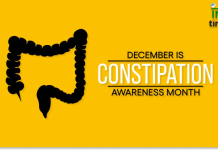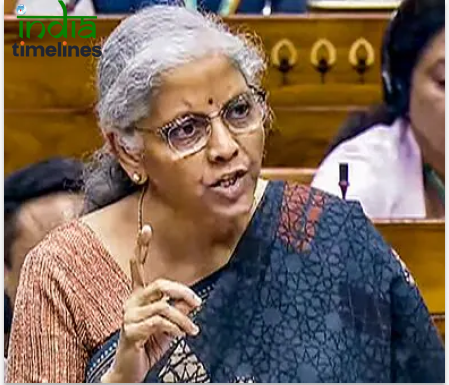
Diwali 2024: The Festival of Lights
Diwali, also known as Deepawali, is one of the most significant festivals celebrated by Hindus across the world. This year, Diwali will be observed on October 31, 2024. The festival spans five days, each filled with unique rituals and cultural significance. The festivities commence with Dhanteras and conclude with Bhai Dooj, bringing families and communities together to celebrate the triumph of light over darkness.
The Importance of Diwali
As per the Hindu lunar calendar, Diwali falls on the 15th day of the month of Kartik, coinciding with the darkest night of the year. It is during this time that Hindus illuminate their homes and hearts with joy, hope, and togetherness. Homes are adorned with earthen lamps, known as diyas, intricate rangoli designs, and sparkling lights, transforming neighborhoods into vibrant showcases of festivity.
Diwali is a time for reflection, family gatherings, and the expression of gratitude. It is a festival that signifies the importance of light, both literally and metaphorically. The lights symbolize the dispelling of ignorance and negativity, guiding individuals towards knowledge and prosperity.
2024 Diwali Calendar: A Five-Day Celebration
The five days of Diwali encompass a series of rituals, each with its unique significance:
- Dhanteras
- Naraka Chaturdashi (Choti Diwali)
- Diwali
- Govardhan Puja
- Bhai Dooj
Let’s delve deeper into each day of the festival.
Day 1: Dhanteras
Dhanteras marks the official beginning of Diwali celebrations. This day is dedicated to the worship of Goddess Lakshmi, the goddess of wealth, and Lord Kuber, the treasurer of gods. Devotees pray for prosperity and success in their endeavors.
On Dhanteras, it is customary for people to purchase new items, especially precious metals like gold and silver. Buying gold coins, jewelry, or even kitchen utensils is believed to bring good fortune. Many households also clean and decorate their homes, making way for the goddess to enter and bless them with wealth and abundance.
Day 2: Naraka Chaturdashi or Choti Diwali
The second day of the Diwali festival is known as Naraka Chaturdashi or Choti Diwali. This day commemorates the victory of Lord Krishna over the demon Narakasura, who had imprisoned countless people and created chaos. The story goes that Krishna, accompanied by his wife Satyabhama, fought and defeated Narakasura, thereby liberating the captives.
On this day, devotees perform rituals that involve early morning baths, which symbolize the cleansing of sins. People also light diyas in the evening to celebrate the triumph of good over evil. Fireworks and sweets mark this day, as families come together to share joy and excitement.
Day 3: Diwali
The third day is the main Diwali celebration, known for its grandeur and elaborate rituals. It is a day that celebrates the return of Lord Rama, Mata Sita, and Lakshman to Ayodhya after defeating the demon king Ravana. This event is symbolic of the victory of good over evil.
On Diwali, homes are beautifully decorated with diyas, colorful rangoli patterns, and strings of lights. In the evening, devotees perform Lakshmi Puja, invoking the blessings of the goddess for wealth and prosperity. Ganesh Puja is also performed to remove obstacles and ensure a successful year ahead.
Families gather to share festive meals, sweets, and exchange gifts. The joy of togetherness is palpable as people visit friends and relatives, fostering a sense of community and belonging.
Day 4: Govardhan Puja
The fourth day of Diwali is dedicated to Govardhan Puja, which honors the Govardhan mountain. According to Hindu mythology, this day commemorates the lifting of Govardhan by Lord Krishna to protect the villagers of Vrindavan from the wrath of Indra, the king of the gods.
Devotees create a representation of Govardhan using cow dung, and it is decorated with flowers, fruits, and sweets. Rituals involve offering prayers and food to Krishna, acknowledging his divine protection and blessings. This day signifies gratitude towards nature and the importance of sustaining our environment.
Day 5: Bhai Dooj
The final day of Diwali festivities is Bhai Dooj, also known as Bhau Beej or Bhaiya Dooj. This day celebrates the special bond between brothers and sisters. Sisters pray for their brothers’ well-being, prosperity, and success, while brothers vow to protect and support their sisters.
On Bhai Dooj, sisters apply a ceremonial tilak (a mark on the forehead) to their brothers and perform aarti (a ritual of worship). In return, brothers give gifts and sweets, expressing their love and appreciation. This day reinforces family ties and the values of love and protection.
2024 Diwali Shubh Muhurat
For 2024, the auspicious timing for various rituals during Diwali is as follows, according to Drik Panchang:
- Diwali (Lakshmi Puja) Muhurat: 6:52 PM to 8:41 PM
- Pradosh Kaal: 6:10 PM to 8:52 PM
- Vrishabha Kaal: 6:52 PM to 8:41 PM
- Amavasya Tithi Begins: 6:22 AM on October 31
- Amavasya Tithi Ends: 8:46 AM on November 1
India Time Lines
Conclusion
Diwali is not just a festival; it is a time for renewal, family bonding, and the celebration of life. The festival encourages individuals to come together, reflect on their lives, and share moments of joy with their loved ones. As we approach Diwali 2024, may the spirit of the festival inspire kindness, compassion, and harmony among all.
With its vibrant traditions and rich cultural significance, Diwali continues to illuminate lives, bringing hope and prosperity to families worldwide. Whether through prayers, festive gatherings, or acts of kindness, each individual contributes to the essence of this beautiful celebration. Embrace the light, joy, and warmth of Diwali, and carry its spirit with you throughout the year.



































